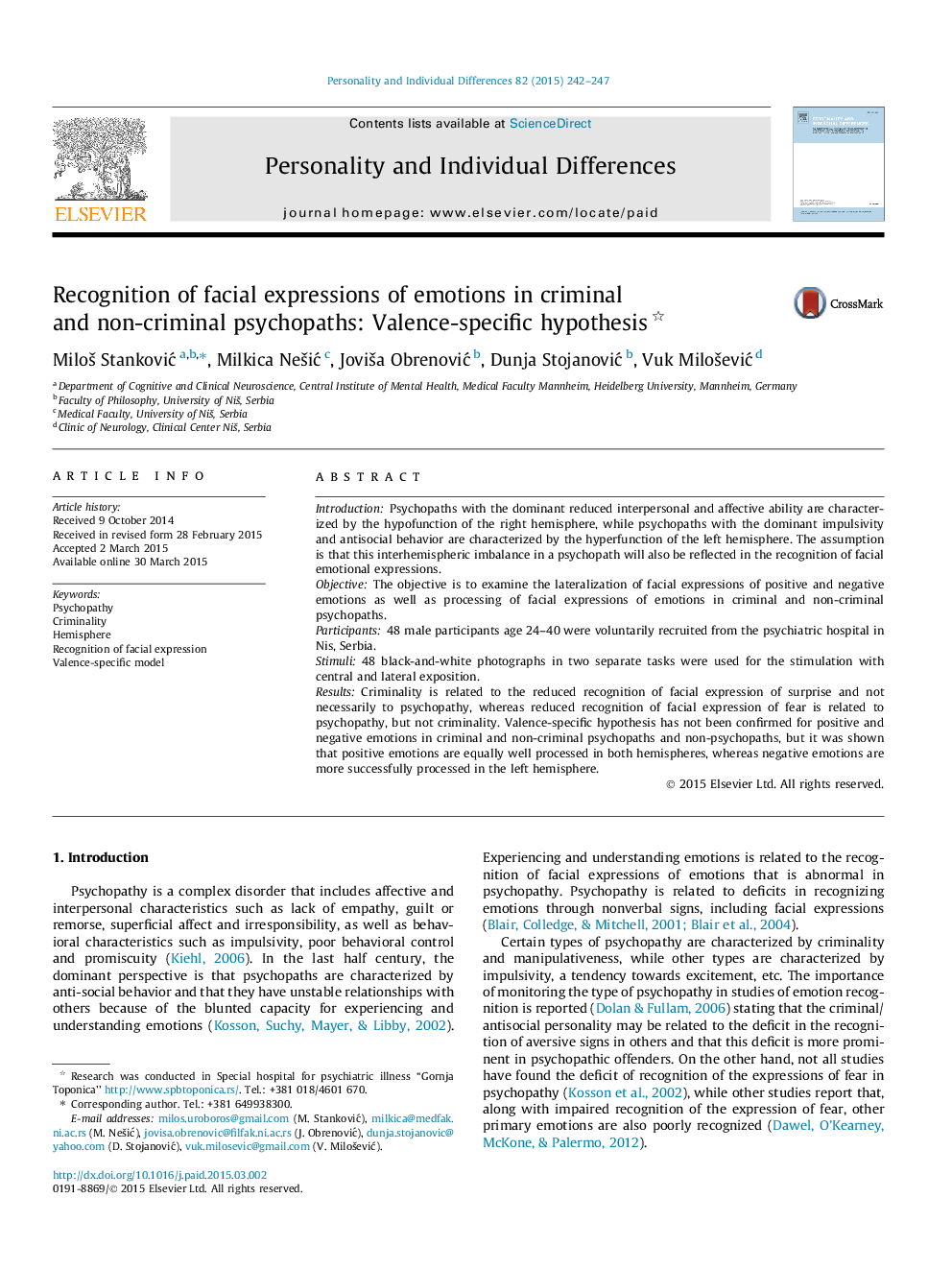| Article ID | Journal | Published Year | Pages | File Type |
|---|---|---|---|---|
| 890109 | Personality and Individual Differences | 2015 | 6 Pages |
•We tested experimental design with bilateral/lateral presentation of facial stimuli.•Psychopathy is associated with abnormalities in the processing of fear and surprise.•The specific-valence model tested has not been confirmed.•We propose the formation of a new model.
IntroductionPsychopaths with the dominant reduced interpersonal and affective ability are characterized by the hypofunction of the right hemisphere, while psychopaths with the dominant impulsivity and antisocial behavior are characterized by the hyperfunction of the left hemisphere. The assumption is that this interhemispheric imbalance in a psychopath will also be reflected in the recognition of facial emotional expressions.ObjectiveThe objective is to examine the lateralization of facial expressions of positive and negative emotions as well as processing of facial expressions of emotions in criminal and non-criminal psychopaths.Participants48 male participants age 24–40 were voluntarily recruited from the psychiatric hospital in Nis, Serbia.Stimuli48 black-and-white photographs in two separate tasks were used for the stimulation with central and lateral exposition.ResultsCriminality is related to the reduced recognition of facial expression of surprise and not necessarily to psychopathy, whereas reduced recognition of facial expression of fear is related to psychopathy, but not criminality. Valence-specific hypothesis has not been confirmed for positive and negative emotions in criminal and non-criminal psychopaths and non-psychopaths, but it was shown that positive emotions are equally well processed in both hemispheres, whereas negative emotions are more successfully processed in the left hemisphere.
